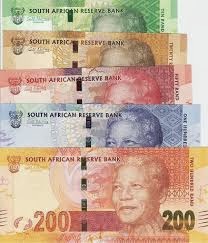260 will be sold to private buyers, and another 250 will be taken to a safe location:
Minister of Environment Affairs Edna Molewa is expected to announce on Tuesday the evacuation of hundreds of rhino from the Kruger National Park in a bid to save them from poachers.
According to the Sunday Times, the plan has been endorsed by Cabinet, despite continualdenials from SANParks about the move.
It is expected that about 500 rhino will be moved. Of these, 260 will be sold to private buyers and another 250 will be taken to a safe location.
In March, SANParks said there had been a 70% increase on average every year in rhino poaching. In line with this, government viewed rhino poaching as a matter of urgency in order to ensure the species did not become extinct.
More than 500 rhino were killed in the first six months of this year, as poachers became increasingly sophisticated, using semi-automatic rifles.
Rhino poaching jumped from 13 animals being killed in 2007 to the slaughter of 1 004 last year - mostly in the park, which shares a border with Mozambique.
Despite increased policing - including army patrols along the border - rhino killings have risen steadily every year.
Last year the Kruger acquired a military aircraft equipped with sophisticated surveillance technology to detect poachers.
Elephant poaching
Meanwhile, rangers in the Kruger said recently they were preparing to face a new onslaught against the park's elephants. In May, a bull elephant was found shot dead with its tusks hacked off - an ominous sign that the poaching ravaging elephant populations to the north and east had made its way over the border.
"We are ready. We have the resources to tackle this head on," said Markus Hofmeyer, head of veterinary services at SANParks, which manages the Kruger National Park.
"The fight against rhino poaching has equipped us with the necessary skills."
The WWF last month raised the alarm over plummeting elephant populations in Mozambique after an aerial survey showed ivory poaching was decimating herds in the country.
Elephant poaching is also rife further north in Kenya, Tanzania and Zimbabwe.
Rhino horn and elephant tusks are sold on the lucrative black market, mostly in Asia.
But elephant poaching should not reach the same crisis level as that of rhino, as ivory sells for much less than rhino horn, said Hofmeyer.
"The killing of elephants would require much bigger weapons and the animal generally makes a lot of noise, attracting attention," he said.
The Kruger Park has around 16 200 elephants, according to 2012 figures.
